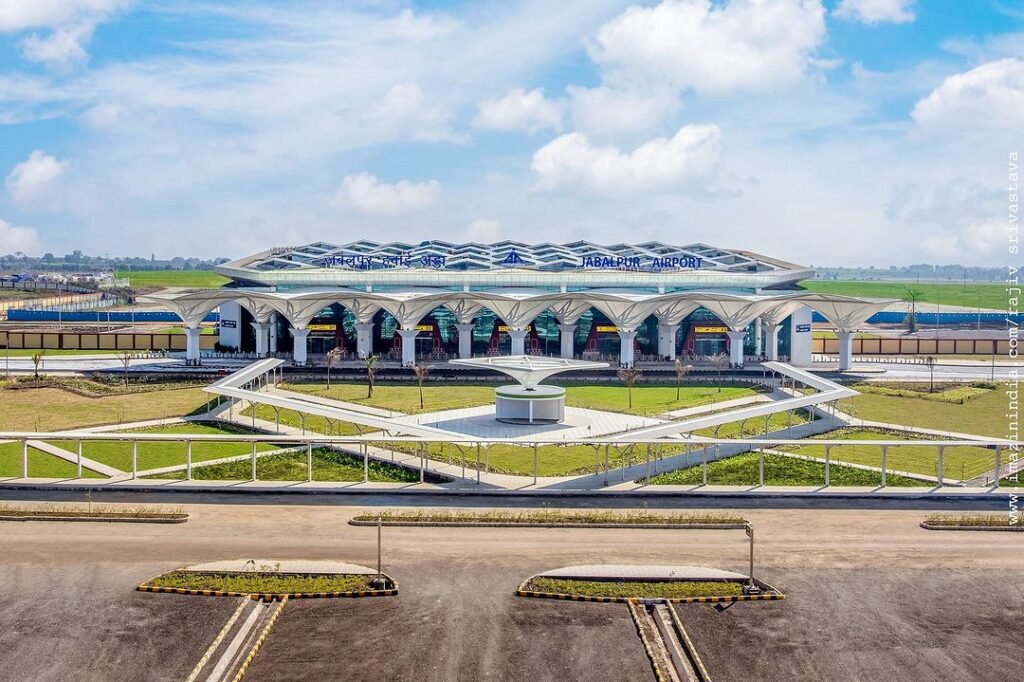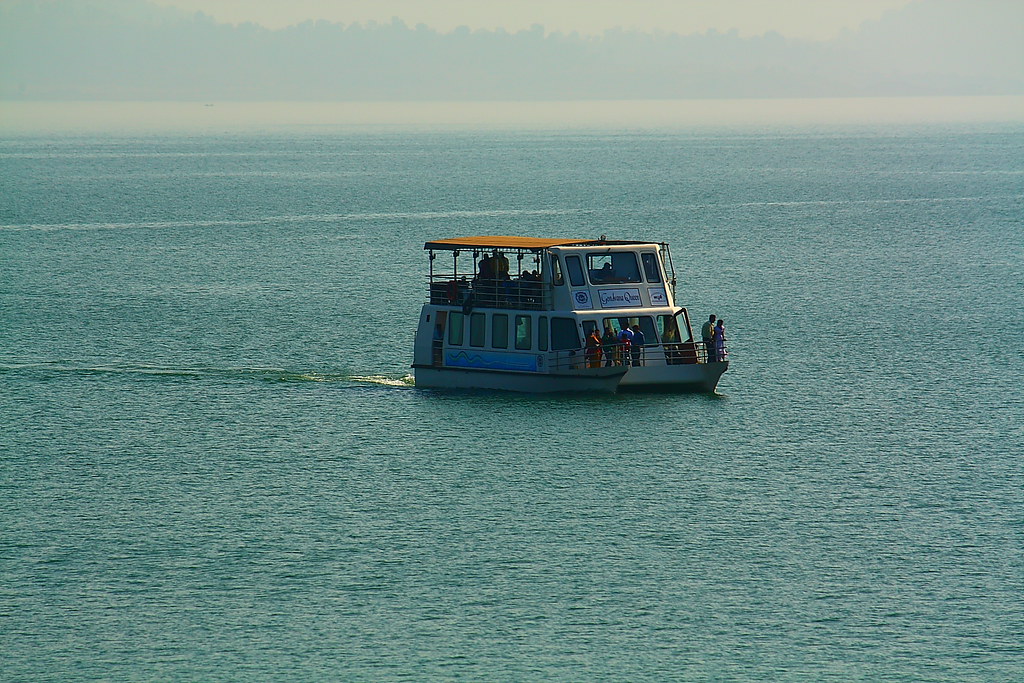Air Connectivity in Jabalpur
Air Connectivity in Jabalpur: A Game-Changer for Tourism and Business
Nestled in the heart of India, Jabalpur is rapidly emerging as a key destination for both tourists and businesses, largely due to its improving air connectivity. In the past, accessing Jabalpur was somewhat challenging for visitors, with limited flight options and facilities. However, things are changing—in a big way. Thanks to recent upgrades and ambitious future plans, Jabalpur’s Dumna Airport is redefining air travel to the city, ensuring that more people can easily and swiftly reach this cultural and natural hub.
In this guide, we’ll explore how Jabalpur’s air connectivity is evolving, the major flights in and out of the city, and what you can expect in the future, especially if you’re planning trips to nearby wildlife reserves or looking to expand your business in the region.

Why Air Connectivity is Crucial for Jabalpur
Jabalpur is a city with immense cultural, economic, and environmental significance. Located in Madhya Pradesh, it’s known for its proximity to historical sites, breathtaking landscapes, and rare wildlife—think marble rocks, Dhuandhar Falls, and national parks like Kanha and Bandhavgarh, home to India’s iconic Bengal Tigers.
Until a few years ago, poor transport infrastructure meant that these gems were harder to access, limiting the flow of tourists and hampering economic growth. The reasons behind improving air connectivity in Jabalpur are simple:
- Tourism boom: Easy access to nearby natural reserves and historical locations.
- Business growth: Improved routes to industrial cities, aiding commerce.
- Education and healthcare: As Jabalpur grows in healthcare and education sectors, air travel plays a critical role for students and patients traveling from nearby states.
Jabalpur Dumna Airport (JLR): The Gateway to Central India
Located approximately 25 kilometers from the city center, Dumna Airport has seen fast-paced development in recent years. Managed by the Airports Authority of India (AAI), Dumna Airport (IATA code: JLR) is positioned to elevate Jabalpur’s status as a leading destination for both domestic and international travelers.
Key Facilities at Dumna Airport
- Expanded Runway: In order to accommodate larger aircraft and increased traffic, the upgraded runway can now handle wide-body jets like Airbus A320s and Boeing 737s. This is pivotal for handling higher passenger volumes and encouraging airlines to add more flights.
- Terminal Upgrade: The terminal at Dumna Airport is undergoing significant enhancements, offering more comfort for passengers with expanded facilities like food courts, lounges, and retail outlets.
- Future Expansion Plans: There are also long-term plans to build a completely new terminal to manage future passenger load, along with installing modern aviation technologies that will speed up services like check-ins and baggage handling.
Domestic Flight Routes Connecting Jabalpur to Major Indian Cities
Jabalpur’s domestic connectivity has been the biggest driver of its modernization story. Airlines like IndiGo offer direct flights to several of India’s busiest hubs. Here are some of the top cities Jabalpur is now efficiently connecting with:
- Delhi to Jabalpur: Frequent flights link Jabalpur with the nation’s capital, essential for government and business travel.
- Mumbai to Jabalpur: Direct flights make it easier for entrepreneurs and business professionals to explore opportunities between Jabalpur and India’s financial center.
- Hyderabad to Jabalpur: These southern connections are particularly helpful for IT professionals and business travelers.
- Bangalore to Jabalpur: Known for its tech and start-up energy, Bangalore’s link with Jabalpur opens new doors for collaboration and growth.
- Indore to Jabalpur: Direct connectivity with the financial and IT capital of Madhya Pradesh.
All these connections not only benefit tourists but also forge strong links for businesses, students, and professionals alike.
The Future of Air Connectivity in Jabalpur: Going Global?
The future is bright for Jabalpur as international travelers may soon be able to fly directly into the city courtesy of potential new routes to prominent Southeast Asian destinations like Singapore and Thailand. Though these plans are still in the pipeline, officials have hinted that such direct connectivity could be available within the next few years.
This step, should it materialize, would help boost inbound tourism, making Jabalpur a convenient stop for international tourists who wish to explore India’s rich biodiversity, vibrant culture, and history. International flights would further cement the city as a major hub in Central India.
This improved connectivity might also appeal to the growing healthcare and education sectors in Jabalpur, making international collaboration and medical tourism more feasible.
How Air Connectivity is Positively Impacting Jabalpur’s Economy
Improved air connectivity isn’t just about making travel easier—it’s changing the dynamics of the city itself.
1. Tourism is Flourishing
With wildlife hotspots like Bandhavgarh, Kanha, and Pench National Parks a short road trip away, more and more tourists are choosing Jabalpur as their base. The city’s air connectivity ensures quick access from metro cities, eliminating the need for long, tiresome train journeys.
This surge in tourism has paved the way for growth in hospitality businesses, including resorts, hotels, cafes, and local operators providing safaris and eco-tour experiences.
2. Business Travel Made Easier
For industries like defense, Jabalpur already holds a strategic position, home to defense production units like the Gun Carriage Factory and Vehicle Factory. With enhanced connectivity, executives and suppliers can easily visit the city, reducing travel downtime and costs. The prospects of foreign investors visiting Jabalpur also look promising as connectivity grows globally.
3. Education and Healthcare Access
Jabalpur is known for its education institutes as well high-quality medical facilities. The new air routes make it simpler for students, faculty, and patients to travel to and from Jabalpur, helping these industries grow further. Parents and patients no longer need to stress over time-consuming travel delays, making Jabalpur an attractive hub for healthcare and education seekers from neighboring regions.
Environmental Responsibility: Developing Responsibly
The Dumna region around Jabalpur Airport is home to rich biodiversity, including wetlands and forests. Ensuring sustainable development is key to keeping this ecosystem intact, even while expanding airport facilities. Fortunately, environmentalists and the Airports Authority of India have worked together to ensure that any infrastructural development respects the area’s ecological significance.
Conclusion: Jabalpur’s Air Connectivity—a Gateway to a Prosperous Future
In summary, Jabalpur’s expanding air connectivity is reshaping the city’s future—with profound effects on the local economy, tourism, business, and even the environment. Whether you’re a tourist eager to explore Madhya Pradesh’s breathtaking landscapes or a business traveler eyeing investment opportunities in this emerging hub, enhanced flight options make it easier than ever before to access this exciting city.
As Dumna Airport continues to grow, with future upgrades and potential international flights on the horizon, Jabalpur is poised to be a major player in more than tourism—it could well become an economic force to be reckoned with in Central India.



















